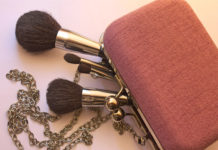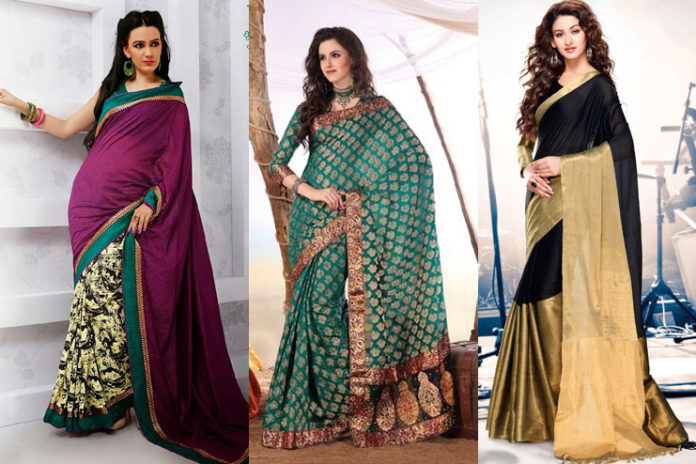Affiliate Disclaimer
Some links in this article are affiliate links. We may earn a small commission if you make a purchase through these links, at no extra cost to you. We only recommend products we find useful to our readersChanderi, being situated at the boundary of the two cultural regions of Madhya Pradesh, Malwa as well as Bundelkhand, it is placed in the Vindhyachal ranges and is home to a very wide range of traditions. It is said to have been founded by the Lord Krishna’s cousin named Shisupal, and the weaving culture of Chanderi started during 2nd as well as 7th century and today it is among the best known handloom clusters in this country. Specializing in producing the fine textured Chanderi sarees of the silk as well as cotton embellished with the zari woven work intricately done by the hand interspersed with delicacy of an extra weft motifs for times immemorial satisfied and refined the tastes of royalty.
All the three types that are woven in the Chanderi namely Chanderi silk sarees, Chanderi cotton sarees and Chanderi silk cotton sarees display various beautiful striking motifs that includes ‘Nalferma, ‘Chatai’, ‘Dandidar’, ‘Jangla’, Mehndi wale haath’. it is known for the sheer texture, light weight as well as a glossy transparency which accounts for the delicate texture, it is a mix oftraditional, modern techniques and deft skills of the weavers honed by the Chanderi that stands out as an excellence in every sense.
Chanderi saree, ethnic fabric mainly characterized by the lightweight, sheer texture as well as fine luxurious feel. Chanderi fabric is basically produced by weaving silk and golden Zari in a traditional cotton yarn that results in the creation of a shimmering texture. The fabric is borrowed from a small town called Chanderi in Madhya Pradesh where the traditional weavers practice the art of producing sarees in cotton and silk that is decorated with fine zari work.
Nowadays, many young women prefer to wear Chanderi silk sarees. It is considered as one of the must-have items for every saree connoisseur and has emerged as the most understated Indian attire. Chanderi sarees are an impeccable choice for the summer wear as well as for any ceremonial dressing such as a weddings or even pujas. So here are some craftsmanship and history of Chanderi silk sarees that you must know about
Chanderi Silk Sarees
History Of Chanderi Silk Sarees:
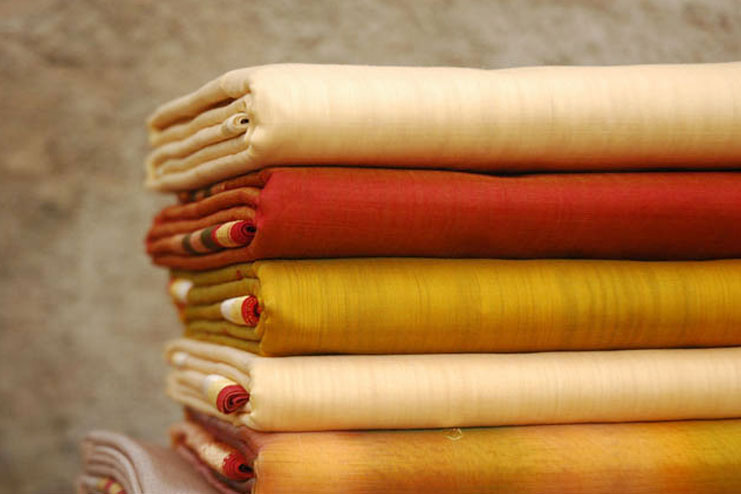
Many dynasties ruled this region from time to time, including Mughals, Rajputs and Maratha. Many Kings and Kingdoms, Badshahs and Sultans, Queens Palaces, Forts, Doors and what not, gave name and fame to Chanderi, now remains just some part of the stories as well as fables; but what majorly survived throughout, from the 12th and 13th centuries AD till today, is its magic of the weave of Chanderi which is known to rich as well as middle classes of India as ‘Chanderi Saris’.
Beginning, weavers are mostly the Muslims. But in 1350, the Koshti weavers from Jhansi have migrated to Chanderi and settled down. During the Mughal period, the business of Chanderi reached to the peak. The cloth length of the Chandri Saree that was being sent to the Mughal Badshah Akbar folded and packed in the hollow of a bamboo, when taken out; a whole Elephant could have been covered by the length. This was a delicacy as well as sophistication of weaving in those days. During the Jahangir’s rule, this art of weaving still mesmerized many people. But it is also true that this weaving practice of Chanderi which peaked during the Mughal period, also deteriorated during the same period. The Jain communityis living in Chanderi for quite a very long time. There are many Jain temples as well as pilgrimage centres in Chanderi.
Know About Kanchipuram Handloom Silk Sarees
Handlooms and Chanderi Sarees:
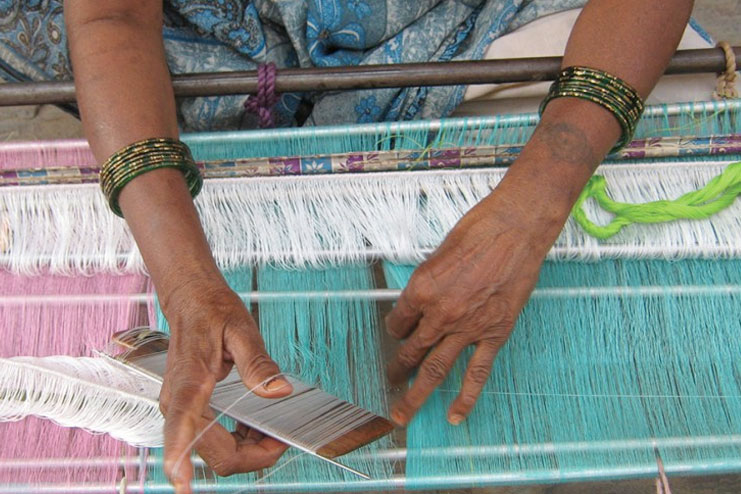
After the 1930’s Industrial Revolution, Chanderi weavers get to know or discovered Japanese silk. They start substituting it in the warps of the cotton sarees and also develop a silk in which the profit margins were much high. The traditional weaving of the Chanderi fabric is mosltly done to make sarees as well as suit materials. These Chanderi fabrics are known for their sheer texture, light weight as well as glossy transparency.
Characteristic of Chanderi Silk Sarees:
The creation of unique buttis or motifs as well as the transparent or sheer texture of the Chanderi fabric are one of the two prime characteristics that can distinguish it from other handloom fabrics.
Motifs Or Buttis:
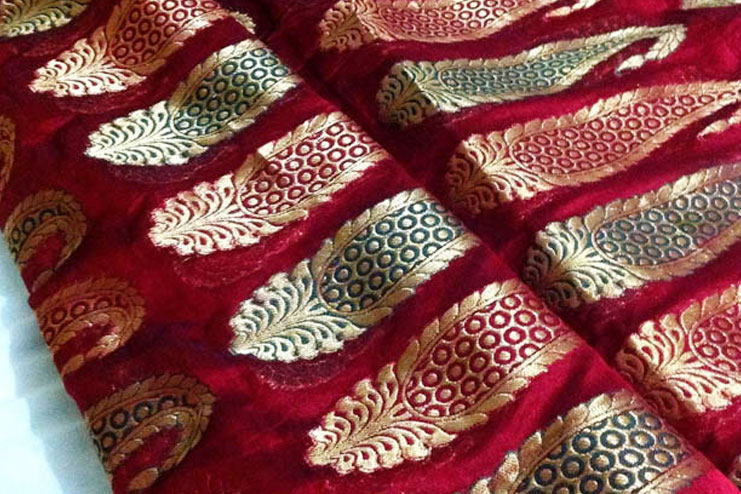
Different Types And Designs Of Banarasi Silk Sarees
From all the traditional motifs of peacock, flowers, lotus to the modern geometric patterns, today you can find a strikingly beautiful motifs like the ‘Nalferma, ‘Chatai’, ‘Dandidar’, ‘Jangla’, ‘Mehndi wale haath’ etc. adorning the fabrics of Chanderi. The color palette of the Chanderi sarees are most predominately ruled by the soft pastel hues, however with the changing times, vibrant combinations of red as well as black, turquoise and navy blue, fuchsia and white even exist.
Transparency:
Transparency or a sheer texture is one of the unique features of a Chanderi fabric that differentiates it from the other textiles being produced across India. The transparency in this fabric is because of the use of single quality of yarn. When the glue of the raw yarn is not being separated from it, the non-degumming can render the shine as well as transparency to a finished fabric which produces a Flature yarn.
Fashion Connect:
Since ancient times, fabric of Chanderi holds a special position in India’s handloom industry. This fabric was being used to weave the nine yard drapes, traditionally. But now, with all the fusion of tradition as well as modern weaving techniques, Chanderi fabric is used extensively by the fashion designers to create Indo-western dresses, tunics and tops.
In the past few years, fashion designers have been working closely with the Chanderi weavers to design fashionable closet essentials. The sheer texture, fineness as well as glossiness of this fabric has been fascinated many creative minds of fashion industry.
Maintenance:
This sheer texture of Chanderi fabric, need to be taken special care. It is mostly advisable to dry clean the fabric and protect the fine Zari work. You can dry it in shade, avoiding direct sunlight.
Fashion Tips Wearing Sari That Can Make You Beautiful























